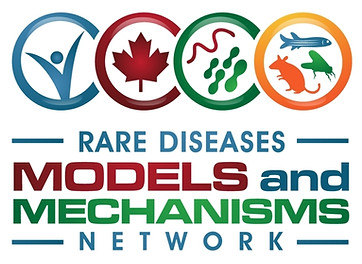Our Research
Our research is focused on the molecular and cellular underpinnings of a broad range of neurological disorders. We are particularly interested in genes that function at the crux of neurodevelopment and long-term neuronal maintenance. We are particularly interested in movement and seizure-disorders. Our primary model systems are fruit flies (Drosophila) and mice where we develop tools to study disease variants and conserved biology related to rare disease. Initially we will be focused on a disease termed NEDAMSS, which has links to more common conditions including autism spectrum disorder, dystonia, and Parkinson’s disease. Moreover, IRF2BPL, the gene responsible for NEDAMSS has an intriguing polyglutamine sequence that may help guide inroads into Huntington’s disease.
Below are some of the most immediate research themes of the lab:
Research Theme 1: Understanding the function of IRF2BPL in neurological disease.
We and others have helped identify truncating mutations in the single exon gene, IRF2BPL (Interferon Regulatory Factor 2 Binding Protein Like) as the cause of a severe neurodevelopmental disorder with regression in pediatric patients, termed NEDAMSS. To date there are over 30 published cases (Fig. 1A). Intriguingly, IRF2BPL is also a high confidence gene implicated in autism spectrum disorder and may be associated with early-onset Parkinsonism. Together, IRF2BPL is critical for development and long-term neuronal maintenance.
In fruit flies, we have showed that neuronal loss of the IRF2BPL ortholog in flies called, Pits, results progressive neurobehavioral defects, axonal loss, and excess Wnt (in flies - wingless) transcription in the brain. Conversely, expression of Pits or human IRF2BPL represses Wnt transcription in flies (Fig. 1B). We confirmed these results by vertically integrating experimental data from Drosophila, zebrafish and human cells with our collaborators. Critically, drugs that inhibit Wnt signalling were neuroprotective in flies and fish. Our results implicate excess Wnt in neuronal demise/dysfunction.
We have since generated multiple Irf2bpl mice to model IRF2BPL loss as well as patient-specific mutations. Hence, we are currently characterizing and comparing functional outcomes, neuropathology, and Wnt signalling in these mice. In addition, we aim to molecularly define how IRF2BPL inhibits Wnt signalling in the nervous system.
IRF2BPL remains enigmatic both in its function and how variants in IRF2BPL affect disease outcomes in humans (autism, NEDAMSS, parkinsonism?). We remain close to clinical collaborators to try to define how changes in IRF2BPL affect these outcomes.
Research Theme 2: Determine how altered wingless/Wnt leads to neural dysfunction/demise.
Wnt signaling is a critical pathway for development of all multi-cellular organisms and has an established role in neurodevelopment. Moreover, Wnt signalling is at the epicenter of multiple neurological disorders and may be a common pathobiological mechanism underlying multiple diseases. Yet how different Wnt pathway components are linked to disease is unclear. Both decreased and excess Wnt has been observed in neurodevelopmental and neurodegenerative diseases. Our lab is interested in determining how altered Wnt leads to neuronal dysfunction and/or demise. In addition, we are interested in determining the role of Wnt pathway components in adult neurons and glia, and how post-natal changes in Wnt may lead to neural dysfunction and demise.
Research Theme 3: Identify other genes involved in human neurological disease.
Flies are an ideal system for initial variant assessment given the enrichment of conserved-disease genes is about 80% and these studies have been successful in identifying new human disease genes. Combining international networks with efforts at the University of Manitoba and Children's Hospital Research Institute of Manitoba (such as Mainstreaming Genomics in Manitoba / Canadian Prairie Metabolic Network), we will use multiple strategies in flies to assess variant function and deeper mechanistic understanding of these genes. These strategies include but are not limited to (Fig. 2A):
-
Humanization, CRISPR-Cas9 GAL4 replacement of the fly gene followed by subsequent expression and assessment of human reference or variant cDNA.
-
Overexpression, comparative analysis of overexpression phenotypes.
-
RNAi-rescue, rescue of phenotypes observed by cell-specific RNAi-mediated knock-down.
Genes of high interest that lack murine models will be prioritized for mouse knockout generation and phenotyping. When available and appropriate, human cells (primary fibroblasts, iPSC derived, or chemically reprogramed neurons or glia) will be generated to confirm findings in model organisms (Fig. 2B). All platforms are amenable to drug discovery where targets will be prioritized based on either high-throughput ‘omics’ data obtained in the lab, hypothesis-driven approaches or guided by available databases. In this manner, we hope to provide novel in vivo functional information and answer fundamental biological questions related to disease.
Funding:














.png)
